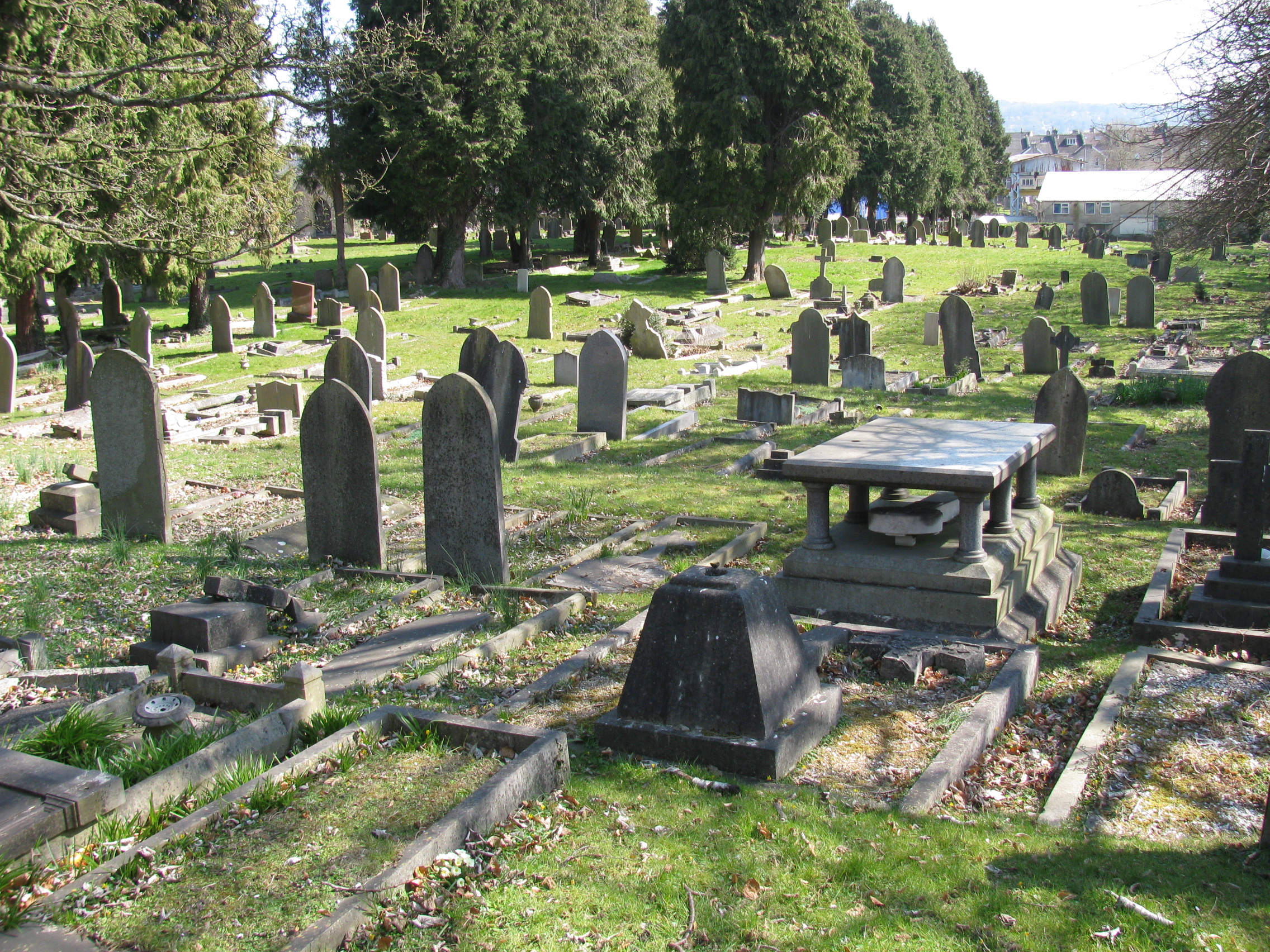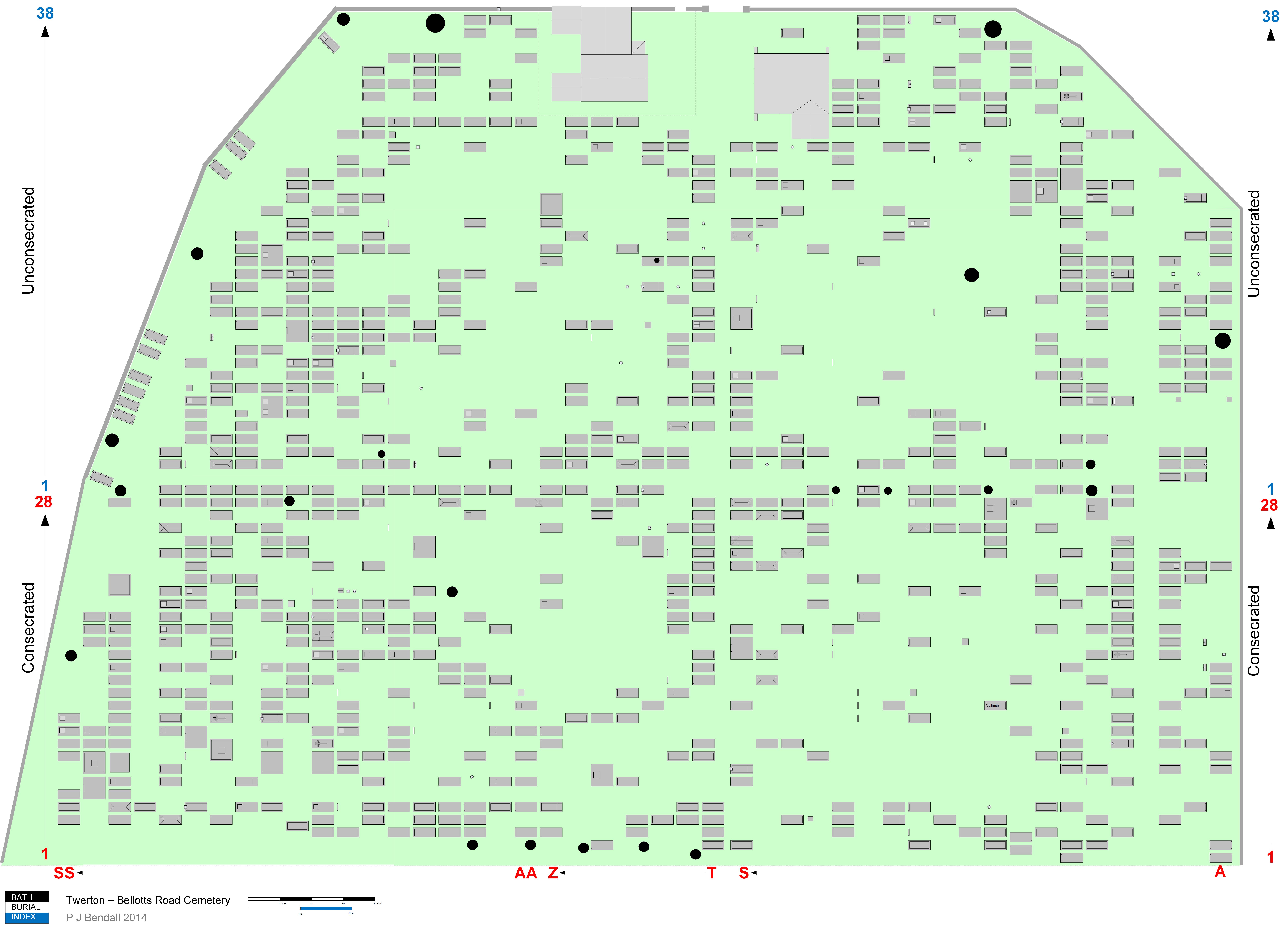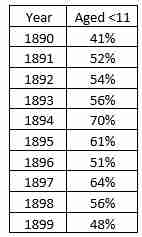
The parish of Twerton has two graveyards:
- St Michael’s churchyard
- the ward-based cemetery administered by a burial board
The cemetery is on Bellotts Road, off the Lower Bristol Road, Bath. It is bounded on the southern side by the railway and on the western side by the one-way portion of Bellotts Road from Oldfield Park. A path of the eastern side goes past an engineering works, along the side of the railway up to Brook Road and a bridge over the railway.
In common with other municipal cemeteries, it came about following agitation in the late 1850s about the cost of burial in Anglican graveyards and the lack of provision for non-Anglicans. This was compounded by a nation-wide investigation into the state of graveyards which led the government to force the closure of graveyards that had become full and to impose restrictions on the spacing of graves and the number of burials per grave.
From the Bath Chronicle of Thu 31 Aug 1882 p3:
CONSECRATION OF A NEW BURIAL GROUND AT TWERTON.—For some time past the Twerton-Avon Burial Board has been laying out a new cemetery at East Twerton, within an easy distance of St. Peter’s Church, and on the north side of the Great Western Railway. The ground—two acres—has been purchased from the trustees of St. John’s Hospital, Bath. The entrance of on the north, and a chapel, 27 feet by 17 feet, has been built there. The southern half of the ground is set aside for the burial of members of the Church of England, and this portion was consecrated by the Lord Bishop of the Diocese on Monday morning. Service was first held in the parish church, the Revs. Preb. Wood, J. Murray Dixon, W. Stokes Law (vicar), and C. Bazell (curate) being present. His Lordship preached a sermon appropriate to the occasion, pointing out that the living had always attached an importance to the decent burial of their dead. The providing a burial place was not only a tribute to human nature and a pledge of affection, but was a reminder to those who were living that they were approaching nearer to the grave, and that Jesus Christ himself rose again from the dead. At the conclusion, the Bishop and clergy, accompanied by the church choir, adjourned to the cemetery where the special service was gone through. A procession marched slowly round the portion to be consecrated, the words of Psalm xlix. and cxv. being repeated at the same time. The sentence of consecration was afterward read by the Registrar, and duly signed by His Lordship. Prayer and signing of Psalm xxxix. followed, and the benediction concluded the ceremony. There were several members of the Burial Board among the congregation.
There are two sections: consecrated and unconsecrated. The rows have letters that start at ‘A’ at the eastern side, go to ‘Z’ and then ‘AA’ onwards. The plot numbers start at 1 at the southern extremity of each section. Two rows of trees run east to west. An anomaly is that, while the row of trees might be expected to be the boundary between the consecrated and unconsecrated section, the start of the unconsecrated section is actually south of this row of trees.
A narrow turf path runs from the gate southwards, between rows S and T. There are also paths along western, southern and eastern sides, a few graves from the boundary.
About 21% of those buried have names on memorials.

Overall about 20% of those buried were aged under 11. However, this is deceptive as in the 1890s this varies between 40% and 70%
